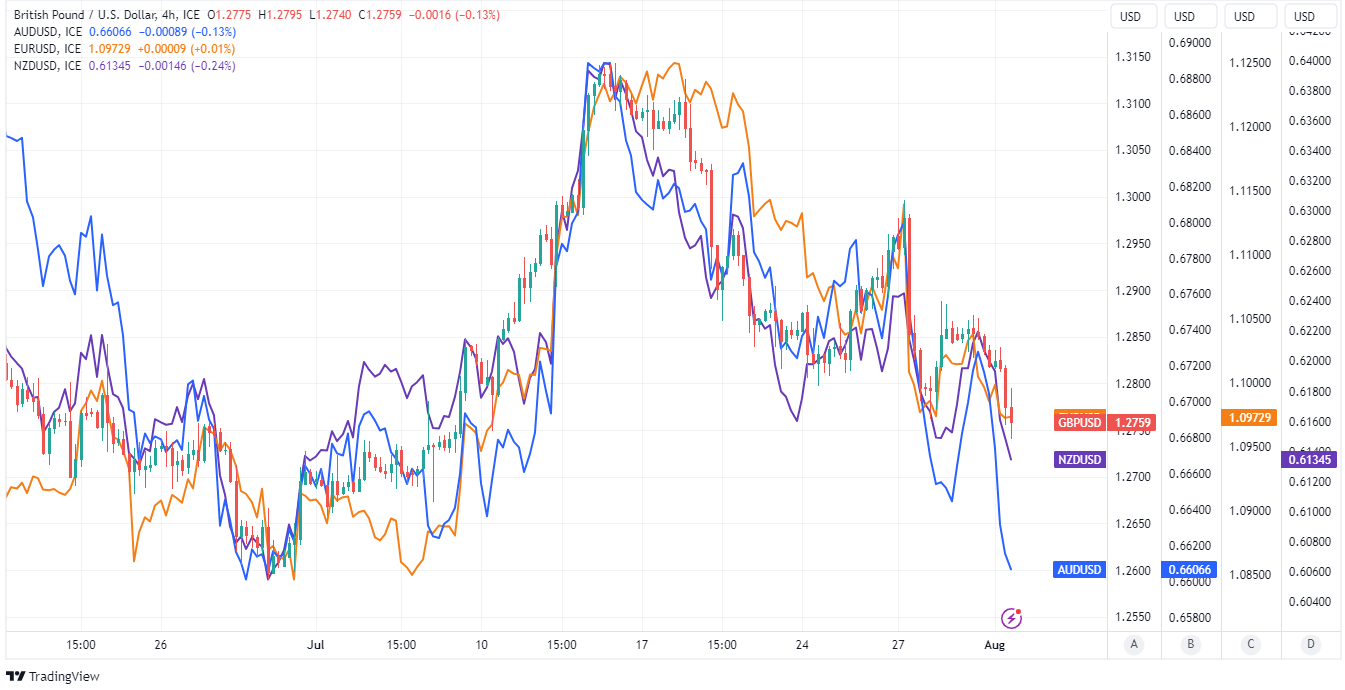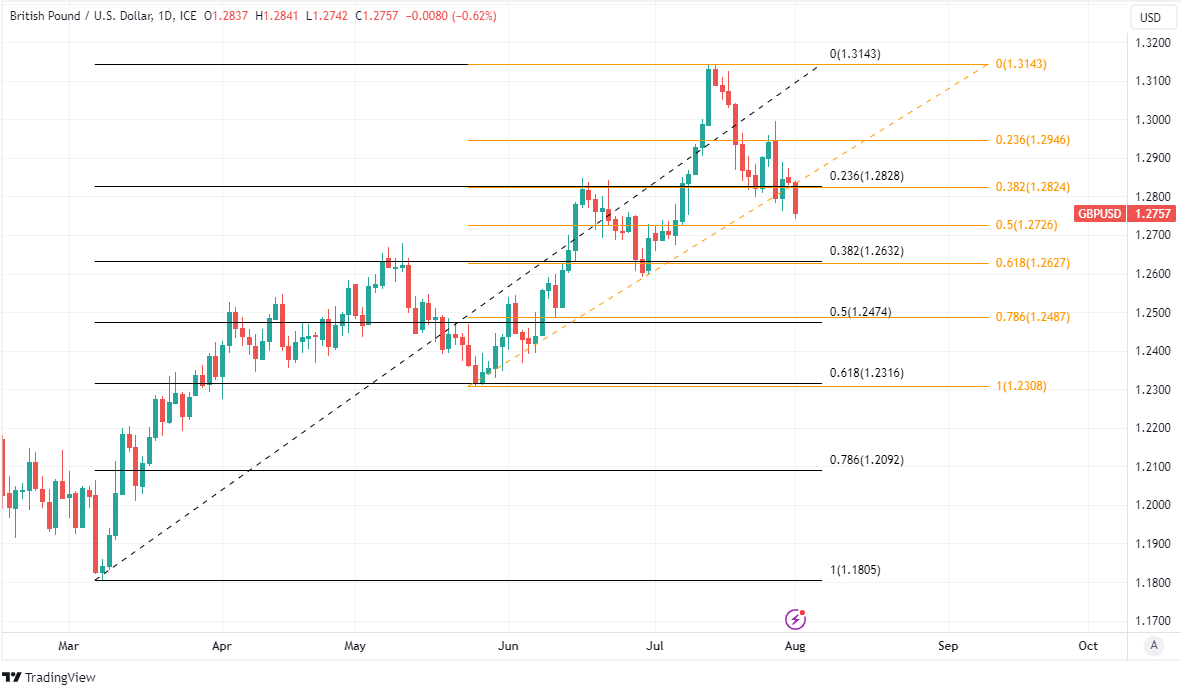GBP/USD Rate Near Landmark Support Levels on Charts
- Written by: James Skinner
-
"Investors may be thinking that the rebound in equity markets is foreshadowing future economic strength, but there are times when the market behaves in a way that is completely uncorrelated with the economy" - Guggenheim Partners.

Image © Adobe Images
The Pound to Dollar exchange rate extended earlier losses toward landmark levels on the charts Tuesday after an influential survey suggested business conditions for manufacturers in the world's largest economy were little improved last month when fossil fuel and furniture producers were among the only companies to see growth.
Growth was limited to petroleum, coal and furniture producing industries in July, according to the Institute for Supply Management (ISM) Manufacturing PMI survey, with all other major industries contracting in an ongoing downturn led by manufacturers of clothing, plastic and rubber products.
Falling export orders and softening employment growth were also prominent reasons why the ISM Manufacturing Index underwhelmed economist expectations when rising from 46 to 46.4, leaving it below the 46.8 consensus.
"Current U.S. market conditions of inflationary and recessionary tactics affecting overall business. Customers are reducing or not placing orders as forecast, (putting) internal focus on reducing financial liabilities and overhead costs," said an unnamed computer and electronic products manufacturer.
Above: Pound to Dollar rate shown at 2-hour intervals alongside other selected exchange rates.
Inventories of materials and products fell in some parts, however, even with moribund business conditions in what was described as a "neutral to slightly positive" outcome for creating space in which new orders, production and economies could grow up ahead.
Materials and products prices also came down with the softening of economic conditions likely to be welcomed by the Federal Reserve (Fed) even though the moderation of price pressures was less than economists expected.
"The Prices Index registered 42.6 percent, up 0.8 percentage point compared to the June figure of 41.8 percent. The Backlog of Orders Index registered 42.8 percent, 4.1 percentage points higher than the June reading," the institute said in a statement.
"The Prices Index remained in ‘decreasing’ territory, at a level generally not seen since early in the coronavirus pandemic (a reading of 40.8 percent in May 2020)," it added.
Bleakened business conditions, enhanced competition between firms and lesser price increases were all favourable outcomes for interest rate setters looking to see a 3% inflation rate falling back to the 2% target over the coming months but did nothing to arrest the earlier decline by the Pound to Dollar rate on Tuesday.
Above: Pound to Dollar rate shown at daily intervals with moving averages and Fibonacci retracements of selected uptrends indicating possible areas of technical support.
Pound to Dollar losses extended amid widespread declines for stock and bond markets as economists looked ahead to Thursday's ISM survey covering the larger and more important U.S. services sector, which is a precursor to Friday's non-farm payrolls figures.
All of this will help further shape market views on the outlook for interest rates at the Federal Reserve little more than a week after it raised the Fed Funds rate to 5.5% but said any further increase would need to be justified by economic data released ahead of the next meeting in September.
Many took those comments to mean the cycle had all but ended already, leading stock and bond markets to rally into the new week, though some investors say this reaction had too little regard for the extent to which the economy could deteriorate as the full effect of the Fed's 525 basis point increase in interest rates makes itself felt.
"Investors may be thinking that the rebound in equity markets is foreshadowing future economic strength, but there are times when the market behaves in a way that is completely uncorrelated with the economy," says Ann Walsh, CFA and chief investment officer at Guggenheim Partners.
"This may be one of those times when the market and economy are disconnected. Monetary policy works in long and variable lags, and we are only starting to see the lagged effects of 525 basis points of hikes and quantitative tightening," she adds in a Tuesday market commentary.












